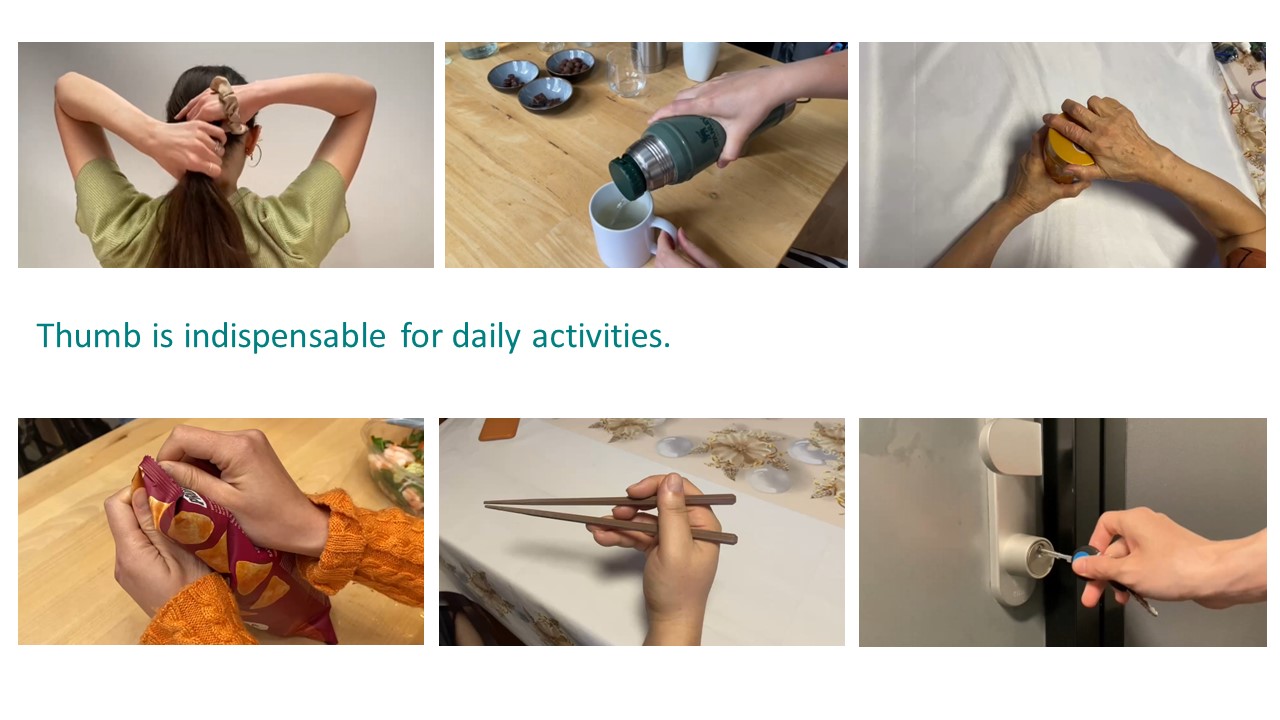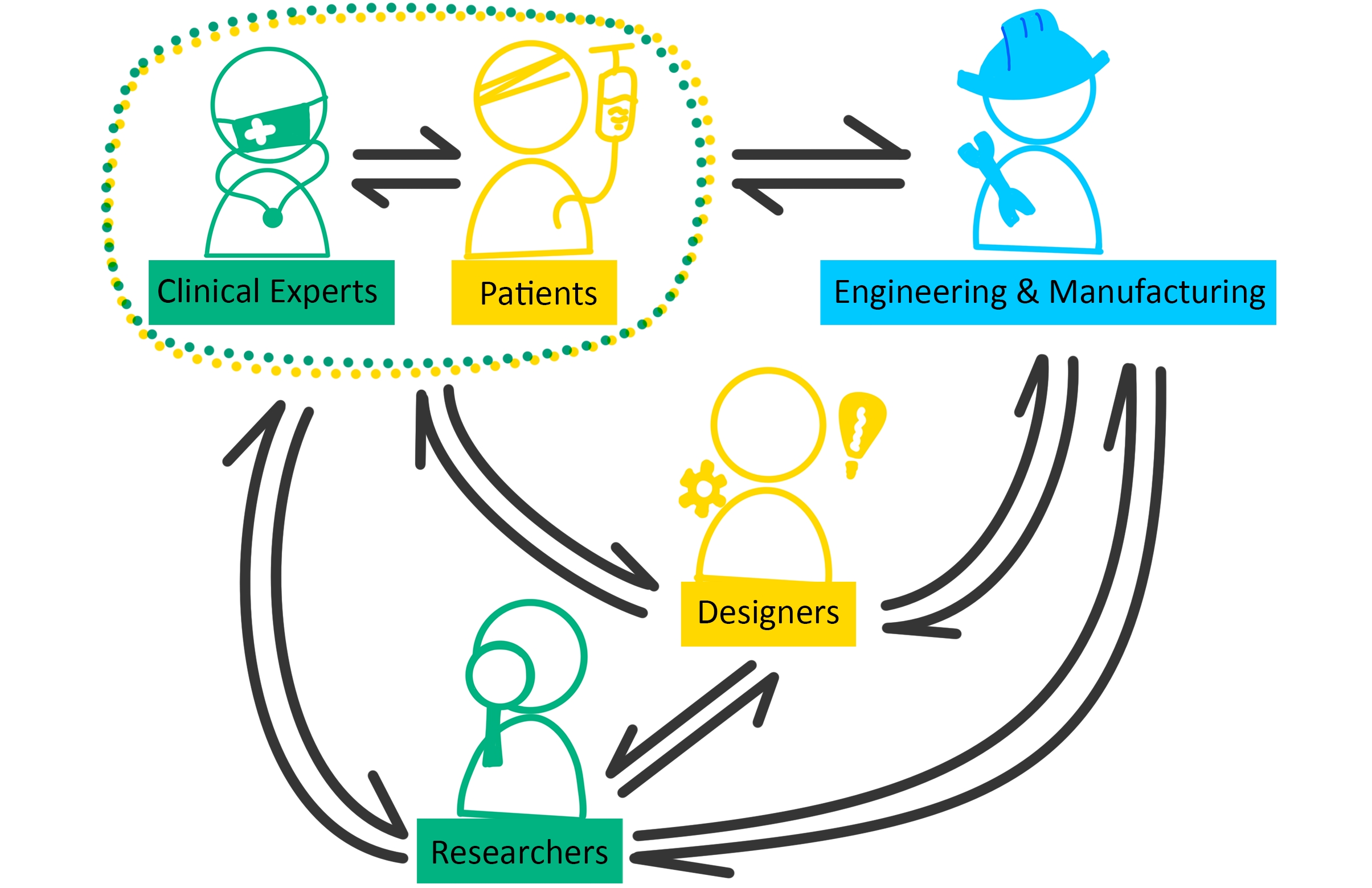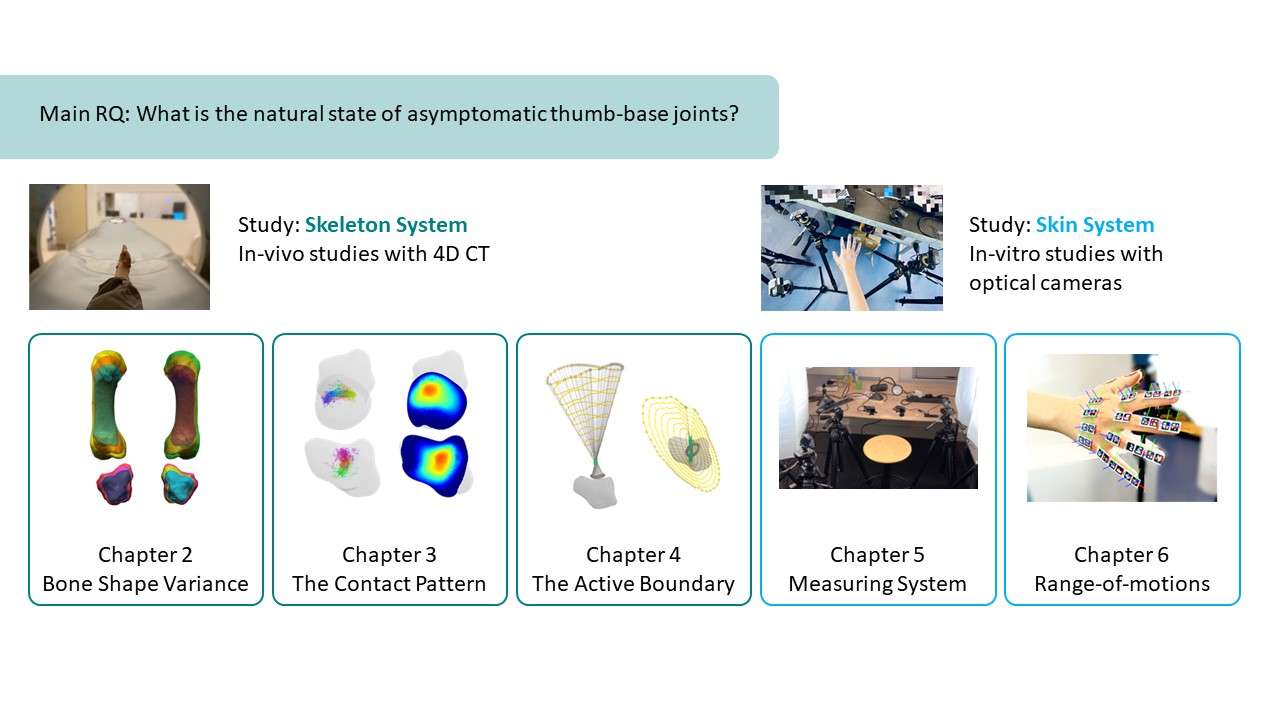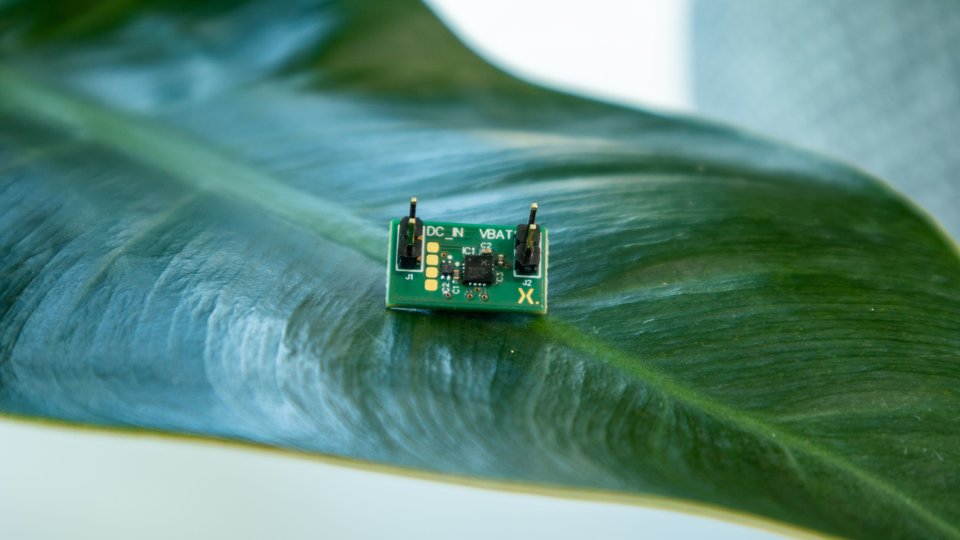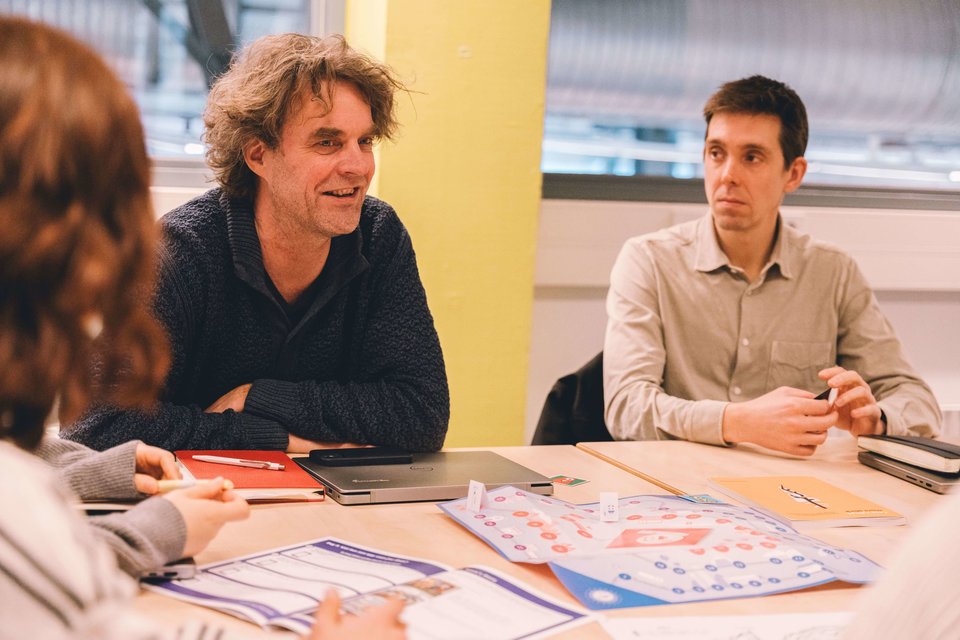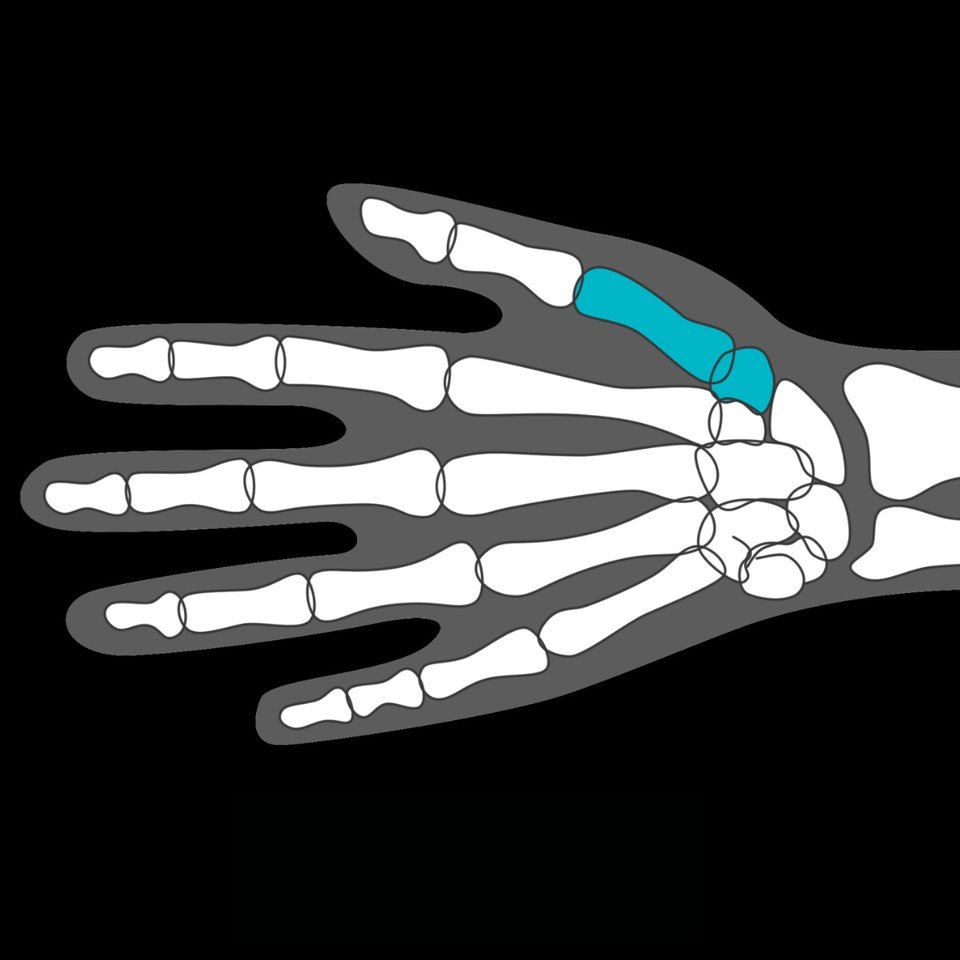Improving implants for a tiny joint with a big impact
From opening a jar, to writing with a pen, or tying shoelaces, thumbs play an important role in enabling numerous daily activities. But due to osteoarthritis, many people experience pain or loss of mobility in the thumb joint, which can limit their ability to function. For her PhD, Helen Yuan aimed to gain deeper insights into the structure and movement mechanics of this joint to help researchers and healthcare professionals improve and develop more effective treatments for patients.
Small but complex
Osteoarthritis is a degenerative disease that can lead to irreversible joint damage and disability. Yuan’s research focussed in a broad sense on hands, but more specifically on a tiny bone called the thumb-base joint, which supports the movement of the thumb. Joint replacement is one of the surgical options that can restore mobility and functionality. But there are complexities with surgery due to the small size of the bone, which makes it is difficult for the surgeon to see and access.
And Yuan noted that lifestyle changes, the evolving needs of thumb use, and the involvement of younger patients pose an increasing need for a long-lasting implant supporting a functional thumb for independent daily life. In addition, when it comes to research on implant design, she said that not much effort has been directed toward hands.
Adding to that, of the research that has been done, it has mostly involved working with cadavers. These things all highlight the need for a more comprehensive understanding of the anatomy and biomechanics of this small, but critical joint.
Anatomy of data collection
With a background in industrial design and mechanical engineering, Yuan saw this design for healthcare project as a new challenge. Her experience helped her to understand and integrate various aspects of multi-disciplinary research that involved designers, engineers, a hand surgeon, and radiologists. Initially, the focus was on the thumb movement itself. She wanted to understand how it works among healthy people who show no signs of joint degeneration, with the goal of gathering data to establish a baseline. One of the studies Yuan conducted involved 4D CT scanning the hands of 54 participants while they performed movements of their thumb. During this scanning process she was looking at bone shape, joint contact, and the active motion boundary of the thumb-base joint.
When Covid created unexpected delays for her in-vivo studies, Yuan proposed and conducted a second study that moved beyond the skeletal system to focus on the skin system, which expanded the research focus to all finger joints. An optical tracking system was used to capture the continuous joint rotation angles of target joints simultaneously while doing various tasks. This enabled the collection and comparison of data on the range of motion during active, functional, and passive activities.
Research outcomes
The findings of Yuan’s research can serve as a valuable reference for optimising thumb-base implant replacements, with the potential to improve long-term outcomes. In addition, this work opens new possibilities for future research directions. Ultimately, realising a better thumb-base joint implant will require a multi-disciplinary effort between clinicians, engineers, designers, and researchers that considers the needs of the patient.
One of the results of Yuan’s research was that design has a pivotal role to play when it comes to connecting all those stakeholders in the quest for an improved solution. It starts with understanding the needs of users, which includes both surgeons and patients. The knowledge generated by this study can then help enable engineers to propose a better mechanism for the movement, which can ultimately contribute to an optimised design. And finally, the optical study leads to reflection on the validation protocols in evaluating an implant and observing the needs of end users. Trying to understand the movement of the joint with dynamic measurements of data, Yuan said she hoped to push the limits of what is known a little bit. “It’s a small step and there are still questions to be answered,” she said.
Personal reflections
Post PhD, Yuan plans to continue working in the healthcare domain in support of research projects. Reflecting on her personal research journey, Yuan recalled an incident that gave her a new and useful perspective. Having herself experienced a thumb injury, she said she gained an appreciation for the important role that the thumb plays. “I could ask friends for help, but it can be a disability for independent daily activity for many people, making you dependent on someone else,” she said. And although she doesn’t necessarily expect people to understand exactly how the thumb works, she does hope her research helps others recognise just how important it is in daily life.

Richard Goossens
- +31 (0)15 27 86340
- R.H.M.Goossens@tudelft.nl
-
Room C-3-140
"In the end there is a solution for everything."
Wolf Song
- +31 (0)15 27 88286
- Y.Song@tudelft.nl
-
Room B-3-220



